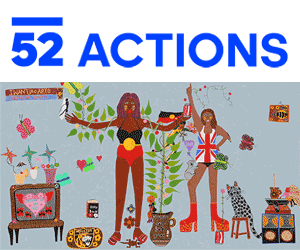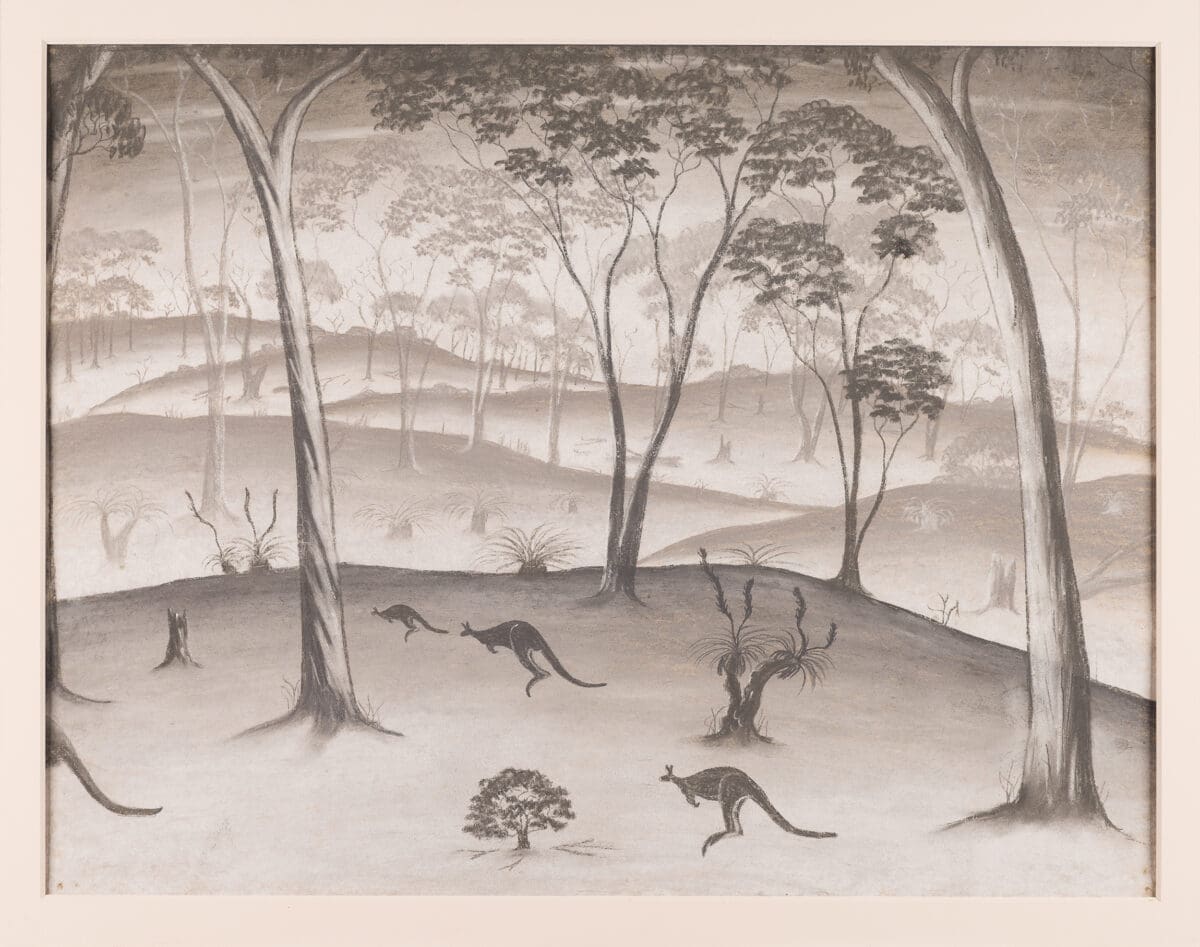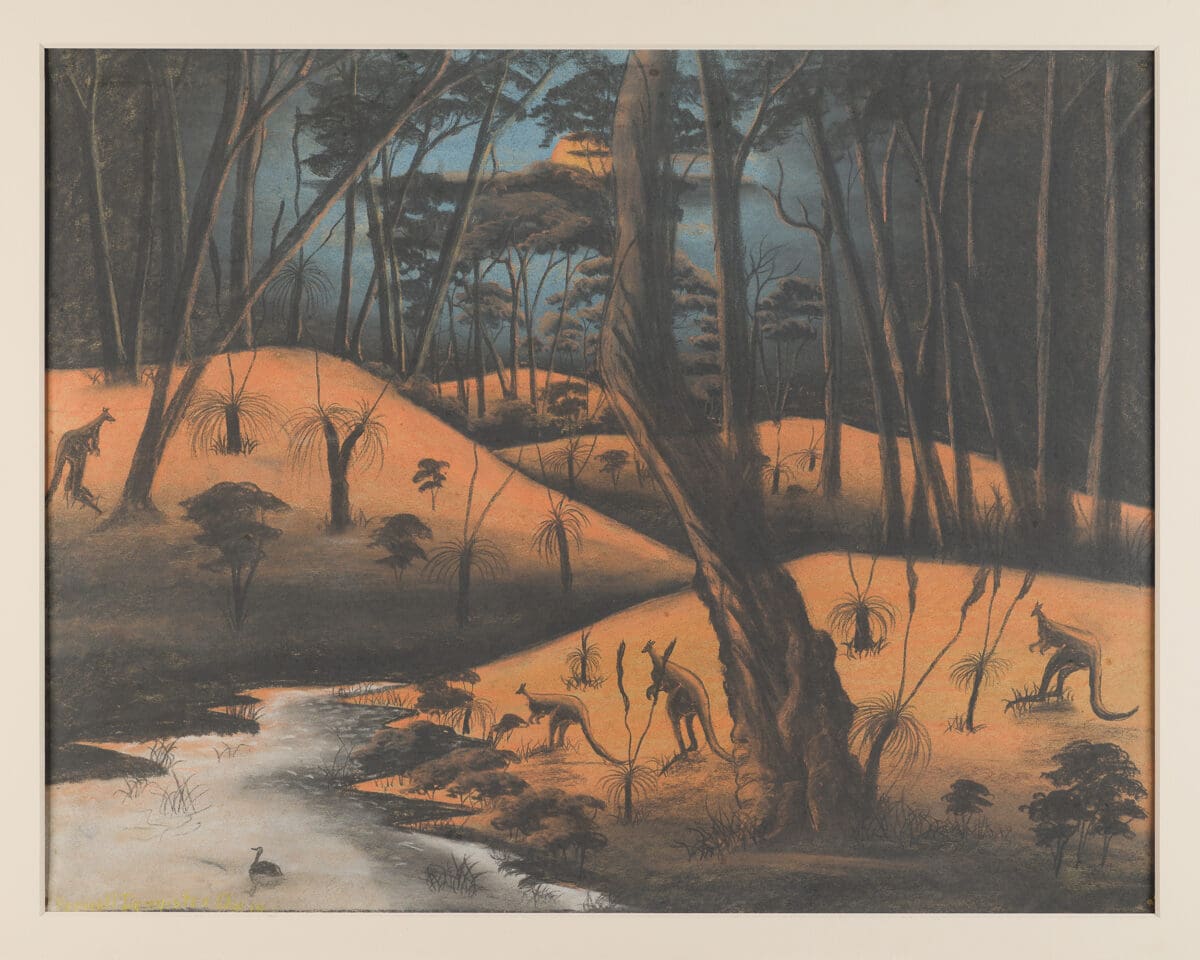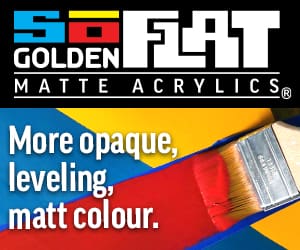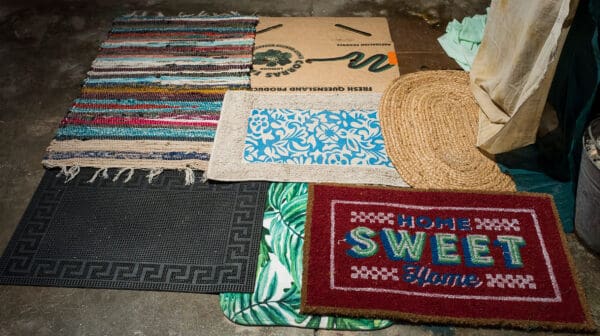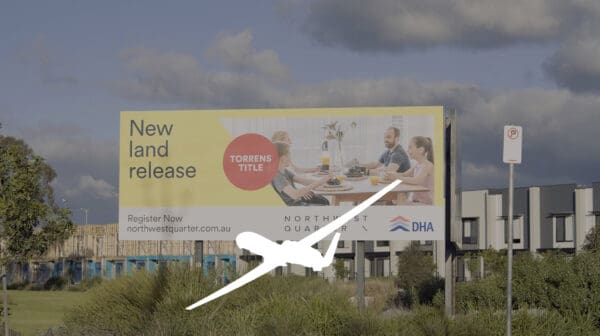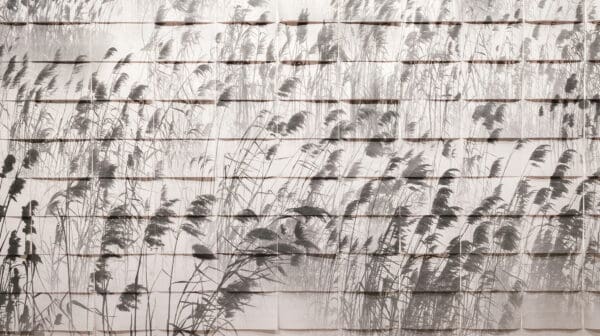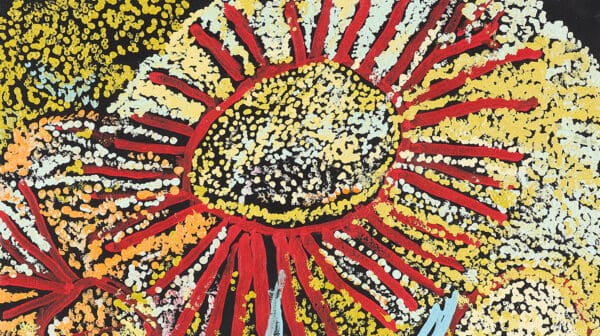Described as “a space for reflection, remembrance, and the sharing of truth”, Kattidj Nagãr is dedicated to the Aboriginal people who once resided at the Carrolup Settlement in Western Australia.
Forming a major part of Kattidj Nagãr are reproductions of artworks and personal objects once kept by the children of Carrolup. Working mostly with pastel and watercolour on paper, the children created many images of the natural world surrounding them—landscapes with kangaroos, wide plains and vibrant sunsets.
Expanding on what the images contain, Carrolup collections officer Lisa Liebetrau and Carrolup engagement advisor Patricia Ryder explain, “You will see the canola crops of Katanning in a bright yellow landscape painted with gouache by Barry Loo, with kangaroos moving across the landscape, drawn with ink. You will also see the patterns and designs created by the Carrolup girls, the most intricate webs of purples, blues and fuchsia pinks to create abstract designs that could be made into dress fabric. Some of these small details are culturally significant to Noongar Country.”
Part of the Stolen Generations, the children were taken to the Carrolup Settlement in the 1940s. Carrolup was one of the many settlements that became places of detainment and forced assimilation. With Kattidj Nagãr created to offer their families a place to honour their memory and reflect on the past, also included are screenings of two films, Heart Coming Home and A Decade of Carrolup, allowing visitors to hear oral histories and interviews with Carrolup descendants and artists.
As they note, “These artworks may be the only tangible trace left of a loved one. We have found that people who have come to engage with the exhibition have gone away with new knowledge about Western Australian history. People have left this space with a more reflective mindset.”
Kattidj Nagãr [Peaceful Quiet Reflection]
John Curtin Gallery
On now—19 December
This article was originally published in the May/June 2025 print edition of Art Guide Australia.

